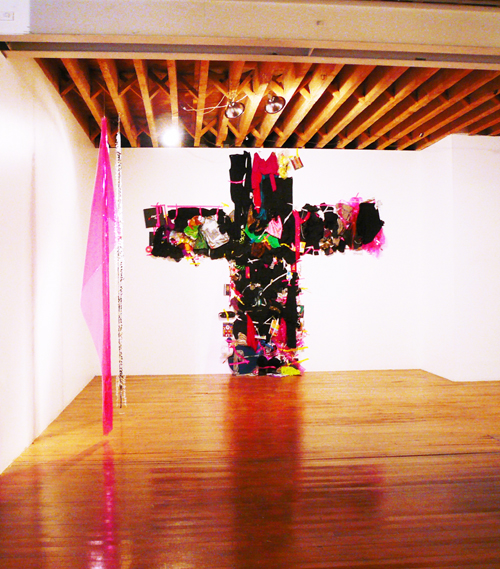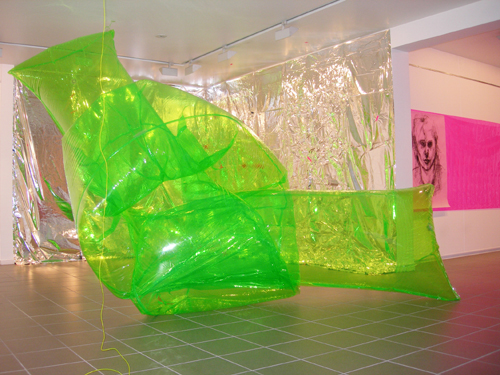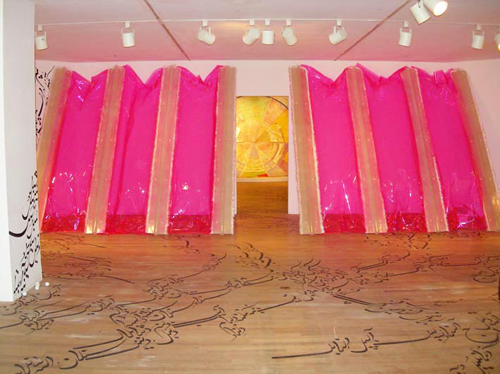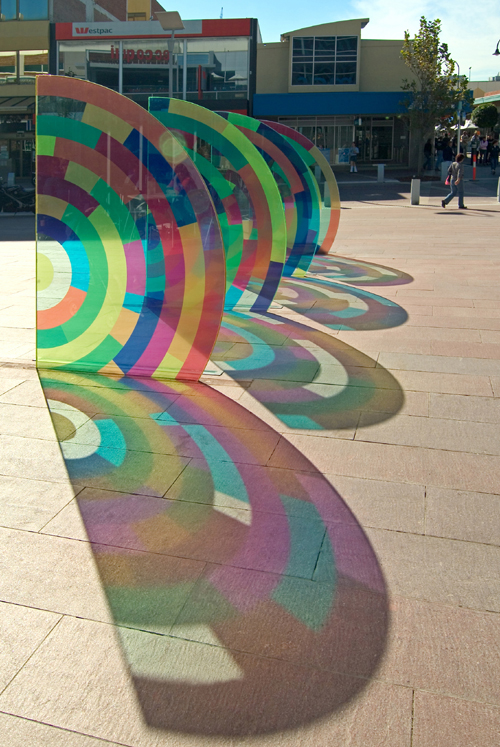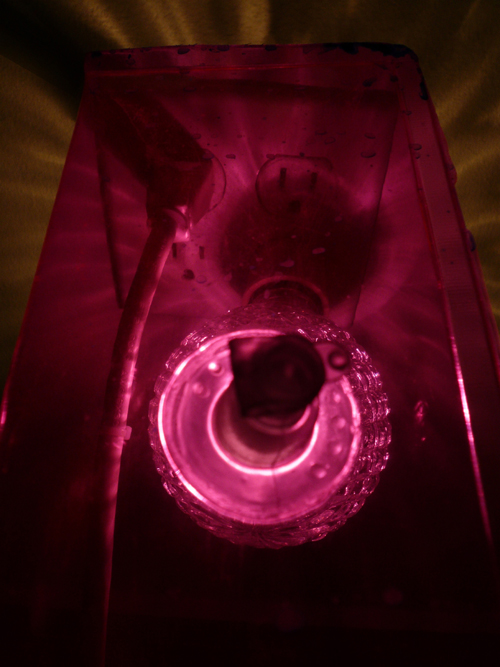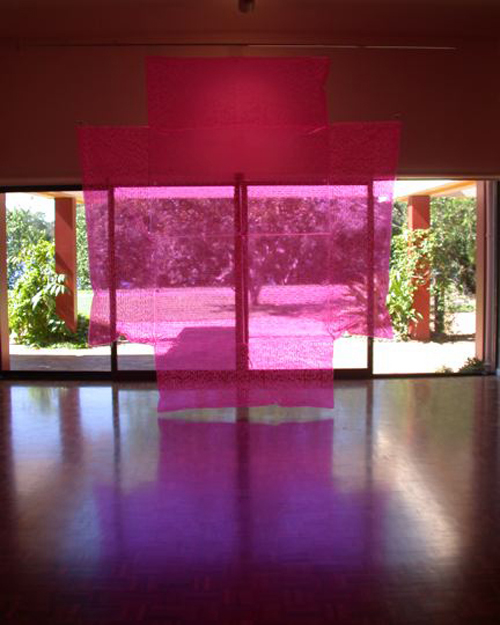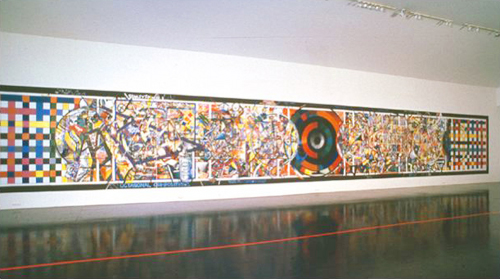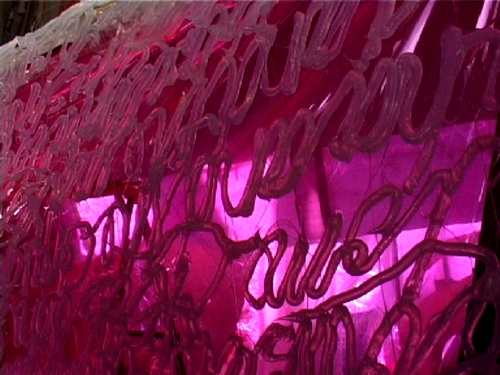

The role of faith in society and in art, has been addressed in numerous forms since the new millennium, yet it is by definition problematic.
In "Writing the Silence: A Taxonomy of Memory", Louise Adler writes:
To say we live in a secular age is an oft-repeated cliché. Since the beginning of the twentieth-century, with legitimate reason, faith has taken a battering. A century on, organised religion now represents a repressive, disempowering, coercive structuring of community. Think of the tragedy of Waco, or the Catholic Church rocked by revelations of sexual abuse, and it is difficult these days not to sense the dangers of organised religion.1
Phrases from scripture are commonplace in western language; constant references are made to biblical events and symbols, yet society is today dominated by secular values, marginalising and devaluing issues of personal faith and organised religion. Indeed there is a new cultural divide: not between Christian and Muslim, Hindu and Jew, but between those who have faith and those who do not. By extension, issues that pertain to religion are being addressed from many perspectives. For example, the Museum of Biblical Art in New York has at present an exhibition, Biblical Art in a Secular Century: Selections, 1896-1999, that examines the role of Biblical imagery in twentieth century art.2 Religious subject matter dominated art for most of human history. Art sought to pay homage to divine beings, as is evident in Australian Aboriginal rock painting that is 40,000 or more years old. Jewish and Christian traditions inspired the finest examples of art in the West. Religious institutions, in turn, provided patronage for artists. From the late Renaissance through the Age of Enlightenment humanist thought and classical philosophy exerted a great influence on art and a shift took place from purely religious to secular subjects. Prior to, and during the Renaissance, many artists devoted their professional lives to conveying Biblical narrative. The Renaissance saw the introduction of humanist texts where man became centre of the universe. In the twentieth century, and more specifically since the Second World War, artists were increasingly reluctant to infuse their art with personal faith. "Although the post-modern paradigm permits visual quotation of details and styles borrowed from antique frescoes or Medieval and Renaissance imagery, this 'face-value' appropriation seldom mines the conceptual complexity of the original Biblical source – nor does it engage in discriminating exegesis of the profound content revealed in Scripture. So what is it about Christian doctrine that makes the contemporary art world shy away from the moral and ethical dimensions inculcated in Scripture, especially when so many artists see no problem in appropriating isolated examples of its iconography?"3
An extreme secularism is growing alongside increased interest in religion. In Britain this has been made articulate by Richard Dawkins, the British scientist and chair for the public understanding of science at Oxford University and author of The God Delusion, which sold 180,000 copies in hardback. His is a militant atheism using abusive and crude stereotypes, just as the Conservative Party sacked a Shadow Minister for "clumsy race remarks", Dawkins is unrepentant.4 There has as one might expect, been a backlash. A further author, Christopher Hitchens, also takes a hostile approach to faith in our turgid times. His new book, God is Not Great: The Case Against Religion, is to be published by Atlantic Books in May. John Gray, Professor of European Thought at the London School of Economics publishes his book, Black Mass: Apocalyptic Religion and the Death of Utopia, later this year.5 These are heady times. On one hand, many seek solace in religion, others revile it for its negative and destructive associations and consequences.
In Australia, Christianity has recently, been largely blamed for the destruction of Aboriginal culture through the systematic attempt at social and biological engineering by the forcible removal of Indigenous children in Australia since early colonisation.6 Australians have felt compelled to re-think the inheritance of the colonial vision that cast the Aboriginal population as inferior to European white settlers. A western chauvinism has been replaced by secularism on one hand, but also a respectful attitude to the spirituality of Aboriginal culture. Against the consciousness-raising that has been required to confront the truth about white Australia's destruction of Aboriginal culture, church going is often associated with middle-class suburbia, or country town parishes, with meaningless convention. The Australian academic and art worlds have not been sympathetic to the infusion of religious views into art, although the Professor of Fine Art for many years was the nun, Margaret Manion, whose field of expertise was Medieval Illuminated manuscripts. Individuals have nevertheless, made contributions, albeit from a marginal position. Irene Barberis is very much an exception to the rule, using her Christian faith to inform her art practice. An inventive practitioner, Barberis is "dedicated to unravelling postmodernism's pattern of historic negation. Her passionate engagement with her subject matter is supported by a strong conviction that static image -making remains a profound form of social communication, even in a world already saturated by accelerated visual stimulus. Drawing inspiration from many diverse historic and contemporary sources, her rich imagery is steeped in self-assurance that the moral codes and spiritual insights of the Bible hold a powerful literal and metaphoric relevance to present-day human life."7
The Jewish Museum of Australia recently staged Intersections: Reading the Space, (2005) which brought together the work of three women artists representing three countries and three faiths. Irene Barberis, an Australian Christian, Jane Logemann an American Jew and Parastou Forouhar, an Iranian Muslim. The exhibition travelled to the Jewish Museum in San Francisco (2006). Barberis, who co-curated the show says there was one central idea she wanted to express. "What we wanted was not so much the visual. We wanted to show that all these works, have been sourced, or responded to from a faith. Whether one believes or not is a personal thing, but the work is real. It is not just a body of work that has been done in the last six months or a year. We are talking about a development over 30 years which has negotiated issues of faith".8 Forouhar was presented with particular issues: "It was interesting to come into the context of the Jewish Museum. As an Iranian, in my passport it reads that with this passport the holder, is not allowed to travel to, occupied Palestine. That is the political context that I have to deal with. So, it was an interesting and curious thing for me to come here and have an exhibition in a Jewish museum. Seeing the work here and looking at how people have reacted has been interesting. I know it is not easy for people to come into a Jewish museum and see script which is very similar to the Arabic form. They are images which have got a political and religious background".9 Jane Logemann's reaction was quite different: "I welcomed the interplay of possibilities of three faiths being represented. I have worked with other languages and I don't see myself as an essentially Judaist artist".10
Irene Barberis uses scripture from the Bible in an independent manner. In her recent work, which was shown in Intersections, she uses the materials of a post-modern, post-industrial society: plastics, silicon, fluorescent colours in grid-like structures, the flotsam, and jetsam of the mass media. For most Christians her imagery appears anachronistic.
Where Anselm Kiefer's recent work which uses the theme of Palm Sunday, departs from traditional methods of painting by using a plethora of symbolic materials ash, clay, rust, plants and lead – his work in iconographic terms maintains strong links with the European tradition. Kiefer was brought up as a Catholic and although he addresses the political legacy of the German nation, he side-steps personal faith as a specific issue. Kiefer's own faith is not the starting-point for his work – the universal issues of transcendence and the political ramifications are his primary issues – and he addresses them with a powerful intellect and passion.
Anselm Kiefer was born in Germany only months before the end of the war in 1945. As a devout Catholic, he was interested in the problematic relationship between church and state. Concerned with religious and philosophical issues from his student days, Kiefer brought to art an intellectual rigour that underpins all of his work. When he had studied art at the university in Freiburg, Kiefer had a number of meetings with Joseph Beuys, whose influence instilled in Kiefer a freedom from artistic convention. Furthermore, Beuys was the first German artist to address the Holocaust in a significant body of work. Beuys stated, "Everyone went to church, and everyone went to the Hitler Youth".11 Central to Kiefer's work has been the use of primal forces and the elements. Fire, with its symbolic associations of destruction, cremation, and war is a pivotal entity in Kiefer's work. Light is used to symbolise God's grace and personal enlightenment. Visions of heaven and hell, hope and destruction are employed by Kiefer in a long and inspiring process to define spirituality, always mindful however, of the state's capacity to use religion as a propaganda tool. Kiefer's landscape paintings are profoundly solemn, eluding to past cataclysm and the inevitability that history will repeat itself. In her essay on Barberis, Anna Clabburn points out that Western culture will never be allowed to forget the atrocity of the Jewish Holocaust, that scepticism towards social certainty in spiritual philosophy will remain. "It follows that in contemporary art postmodernism's 'anything goes' philosophy set out to reduce all artistic styles and periods to a level playing field. This constituted an open semiotic lexicon in which contemporary artists could 'dip their toes' without needing to immerse themselves in the full dimensions of the symbols and narratives being quoted".12
Andy Warhol's Crosses (1981-82) in polymer and paint, and silk- screen on canvas perhaps provide a more appropriate link for Barberis to the modern movement. Warhol was himself a Pop Art icon, and a Roman Catholic who attended mass several times a week.
The intensely female world, of Irene Barberis – she opts for beaded stilettos and a sewing machine in her studio – should be viewed against her working methods. Barberis states: "I perceive myself to be an artist with strong female sensibilities. I honour feminism's historical ability to give women a type of freedom, but I believe that traditional feminism hasn't always allowed women to celebrate their femaleness – to be feminine, or have an inner sense of equality. Sometimes feminism becomes subsumed by the masculine paradigm".13 She is at present travelling between her home in Melbourne and a teaching position in Hong Kong, the British Museum where she draws from illuminated manuscripts, to the Edinburgh College of Art and the University of Dundee where she held a drawing workshop with Tracy McKenna. From there, to Chicago for three weeks to work on a project with Karen Forbes from Edinburgh College of Art and a group of students from Melbourne and Edinburgh. Barberis became a Christian in the 1970s while a student at the Victorian College of the Arts, Melbourne. She has attended church in Melbourne for the past 25 years. Her adoption of Biblical subject matter was gradual. The Director of the Jewish Museum of Australia wrote:
For her work, she breathes in the invisible, or one could say, the negative architectural spaces, and breathes them out into highly coloured transparent plastic. She then takes embroidered and drawn lines of Biblical texts into her own breath, which has inflated and is encased in the ultra-coloured plastics which hang, lean or are free-standing.
The works reflect contemporary everyday life and aspects of cultural lineages, together with ideas and themes found in Biblical visionary texts, especially the Book of Revelation in the New Testament, or from the prophets Daniel and Ezekial in the Old Testament.14
Intersections was conceived by Barberis in 2001 as a potential forum to present visual ideas that would represent three faiths that are integral to contemporary: Christian, Islamic and Jewish. Later the same year the September 11 terrorist attack on New York left the world reeling. The poignancy of having a unified female voice of moderation which sought to overcome violent rhetoric in politics and the media, intensified. Intersections, was, in Barberis's words about difference. "It is not ecumenical. It does, however, have a language of similarity: texts written in space".15 Intersections addressed the relationship between faith and art, between religion and contemporary art practice. The problems associated with cultural exchange were inherent in the exhibition, yet it was also possible to celebrate the fact that three women were prepared to make such a commitment to a better, more tolerant future.
Medieval illuminated manuscripts and Renaissance painting provide important clues to Barberis's visual code. Quickly jotted drawings were made while the artist studied manuscripts at the British Museum, London and the Bibliotheque Nationale, Paris. They capture the awesome drama of the Book of Revelation. The word 'apocalypse' has become a synonym for doom and destruction. The history of apocalypses in art history, "tends to be associated with periods of upheaval and change and a sense of dissolution and decline, times when hope is transformed into a desire for the end of the old order and the start of a new age".16 The transition from the temporal to the eternal, is symbolically portrayed in the Book of Revelation. The old order is purged to make way for the new.
And God shall wipe away all the tears from their eyes and death shall be no more, nor mourning, nor crying, nor sorrow shall be any more, for the former things are passed away.17
At the end of the Second World War, Australian artist Arthur Boyd created a series of dramatic paintings using Biblical imagery superimposed on to a background of the Australian bush. Although small in scale these were monumental in terms of prophetic vision. They established the apocalypse as a powerful and pertinent image of contemporary life. Melbourne Burning (1946-47), The Mockers, (1945), The Golden Calf, (1946) are world landscapes of great significance, unprecedented in the history of Australian painting. These works are pertinent examples of Boyd's growing rejection of the materialistic values of a world bent on war and self-destruction. The equation is made pointedly, between money (represented by gold coins) and the unconscionable self-aggrandisement and chaos of war. Inspired by Peter Breughel, they were produced in response to the moral crisis of war and the bombing of Hiroshima.18
Throughout the centuries, images of women play an important role visually in images of the apocalypse. "In medieval iconography women are used to represent virtues and vices, the forces of temptation in the form of Eve and the Whore of Babylon, and facilitators in the form of the Virgin Mary, Ecclesia (the Church), and the Woman Clothed with the Sun, (who effectively combines both)". In Cambridge Barberis studied the Trinity Apocalyse (Trinity College, Cambridge c.1255-60) in which "the noble lady…kneels in supplication".19 Illuminated manuscripts were vestiges for prayer – the page was synonymous with worship. Image and text were of equal value.
The cumulative baggage of the current age forms a background or landscape composed of a stratification of everyday objects, constructed over time, interwoven with forms redolent of the many aspects of Revelation and its visual history. The landscape is reflected and spatially challenged by fragments of broken mirror which both ape and distort, abstracting the sense of space and time.20
There is a constant interplay in Barberis's work between figurative and abstract, particularly allowing for a minimal structure. Works are often pairs of images with historical imagery on one side and abstract on the other. The abstract imagery refers to mass media and digital imagery, and computer screens, which dominate daily life. All of Barberis' work stems from an urgent "belief in the power of art to help to decipher and anoint human existence".21
Barberis grew up in rural Victoria. She studied ballet from the age of three and only gave it up at nineteen due to an injury. She has a natural predilection for open spaces, preferring to work in warehouses or the reclaimed factory she now lives and works in North Melbourne. The work- room becomes a palette with masses of materials and found objects which resemble a vast still-life composition. Ballet and performance infuse a sense of action in the large installation. A building process takes place with a strange array of materials – sheets of plastic, skeins of fluorescent plastic tubing which emits light when it is distressed, electrically lit cable, an indispensable glue gun and a Brother sewing machine for embroidering Scripture onto silk or tissue. Barberis travels constantly and keeps dialogue with women artists of faith all over the world, many of whom live in oppressive regimes. She is increasingly outspoken in her work and in her rhetoric. Describing her materials she says, "It IS pink. But it is an aggressive light emitting poisonous substance, as well. The optics cause it to emit light if it is distressed or marked. It has this capacity when it is cut to become a strong line of orange light. The pink is poisonous to some and lovely to others – anathema to some, relief to others."22 Barberis interprets the biblical Day of Judgement and demise of mankind as a believer: "as a jubilant opportunity for rediscovering faith and reclaiming the primary force of humanity's will for life".23 In spite of the potential for global calamity through environmental disaster, terrorism and war, Barberis presents an utterly passionate and individual celebration of life itself.
Dr Janet McKenzie
1. Louise Adler, Intersections: Reading the Space, exhibition catalogue fot the Jewish Museum of Australia, Melbourne, April-June 2005, p.16.
2. Cindi di Marzo, "Wrestling With the Angel in the Modern Age", Studio International, e.journal, London and New York, 14.02.07, www.studio-international.co.uk
3. Anna Clabburn, "Reclaiming Faith: The Art of Irene Barberis" in Irene Barberis, Revelation/Apocalypse, MacMillan Publishers Australia, Melbourne, 2001, pp. 17-18.
4. Patrick Mercer, Shadow Defence Minister was sacked by David Cameron on 8 March 2007, The Daily Telegraph, London, 10 March, p.10.
5. Stuart Jeffries, "FAITH",The Guardian, G2, London, 26.02.07, pp.6-11.
6. For detailed accounts see: Peter Read, A Rape of the Soul Most Profound, Allen and Unwin, Sydney, 1999. Henry Reynolds, Aboriginal Sovereignty, Three Nations, One Australia? Reflections on Race, State and Nation, Allen and Unwin, Sydney, 1996.
7. Clabburn, op.cit., p.18.
8. "Women of faith unite", The Age, Melbourne, 16 April, 2006.
9. Ibid.
10. Ibid.
11. Michael Auping, (ed.), Anselm Kiefer: Heaven and Earth, Prestel., London, 2005, p.31.
12. Clabburn, op.cit., p.26.
13. Ibid, p.27.
14. Helen Light, "Introduction", Intersections, op.cit., p.9.
15. Barberis, ibid., p.13.
16. Michelle P. Brown, "Introduction", Revelation/Apocalypse, op.cit., p.9.
17. Book of Revelation, (20:4)
18. Janet McKenzie, Arthur Boyd: Art and Life, with a Foreword by Professor Martin Kemp, University of Oxford, Thames and Hudson, London, 2000.
19. Brown, op.cit., p.12.
20. Ibid, p.12.
21. Clabburn, op.cit., p.21
22. Interview, 10.03.07.
23. Clabburn, op.cit
